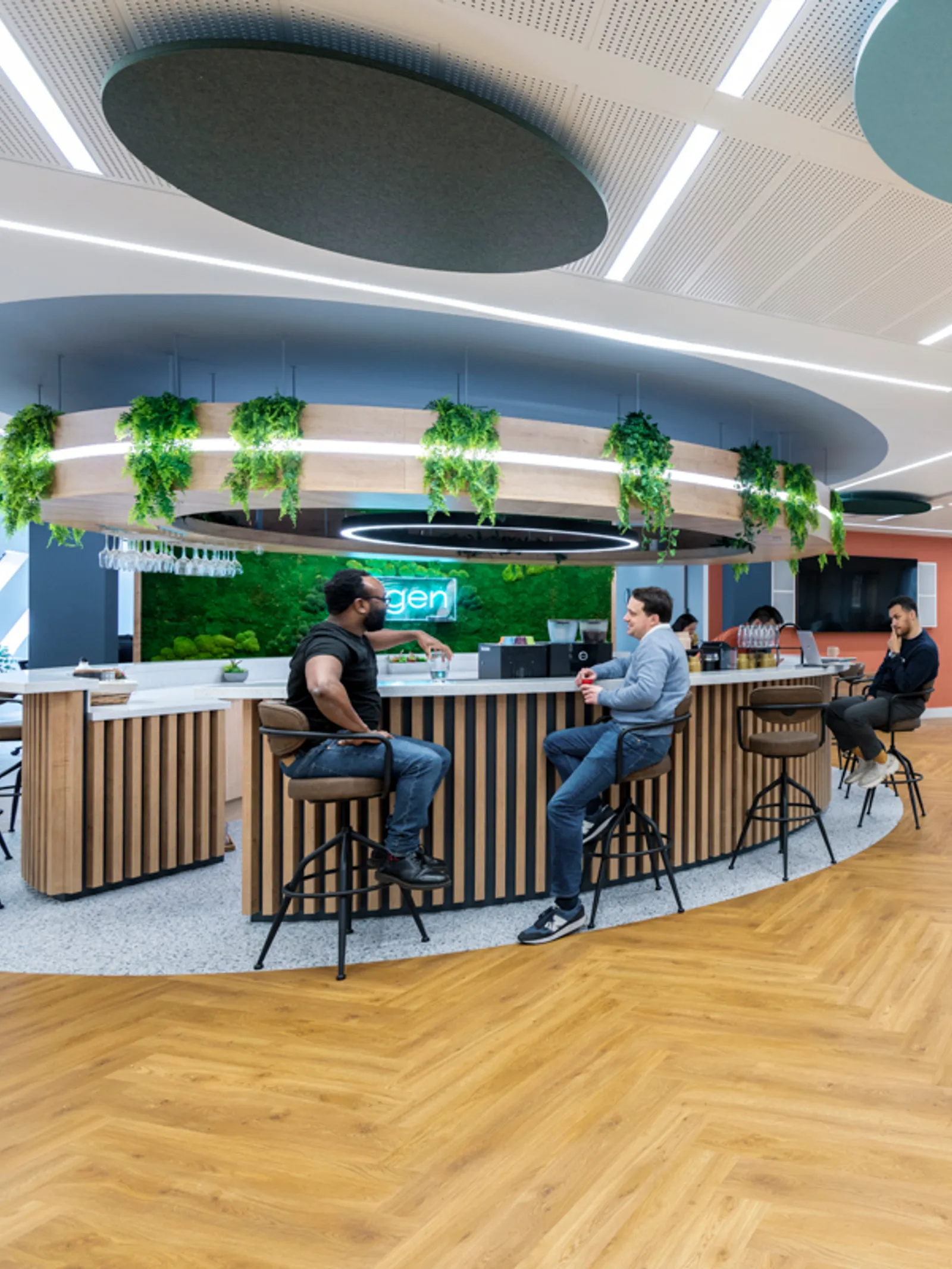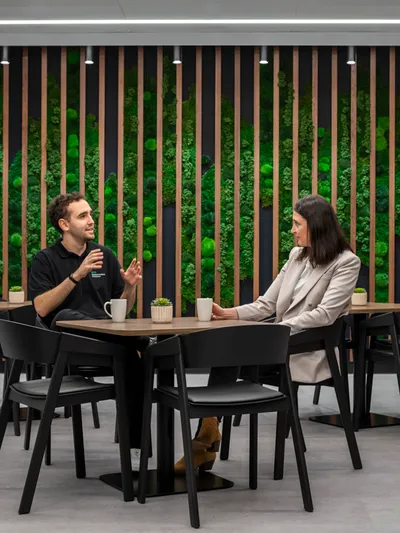In the fast-paced and dynamic landscape of modern business, the traditional office setup is evolving rapidly. Companies are recognising the pivotal role that technology plays in fostering a smart and connected workplace. We understand the crucial intersection of design and technology, and how harnessing both can revolutionise the way we work. In this guide, we explore the key strategies for integrating technology into office design to create a workspace that is not just functional, but truly intelligent and interconnected.
Technology in offices: a key consideration
In the realm of contemporary business, the year 2024 marks a pivotal moment where the integration of technology in office spaces is no longer just a trend but a fundamental consideration for businesses shaping their future work environments. As we reflect on the past decade and compare the office landscape then to the technologically advanced workspaces of today, the transformative journey is nothing short of remarkable. The idea of smart furniture, responsive lighting, and interconnected devices may have seemed like a futuristic concept, but now it is the reality of a well-connected, smart workspace.
Here’s how you can transform your working environment with technology…
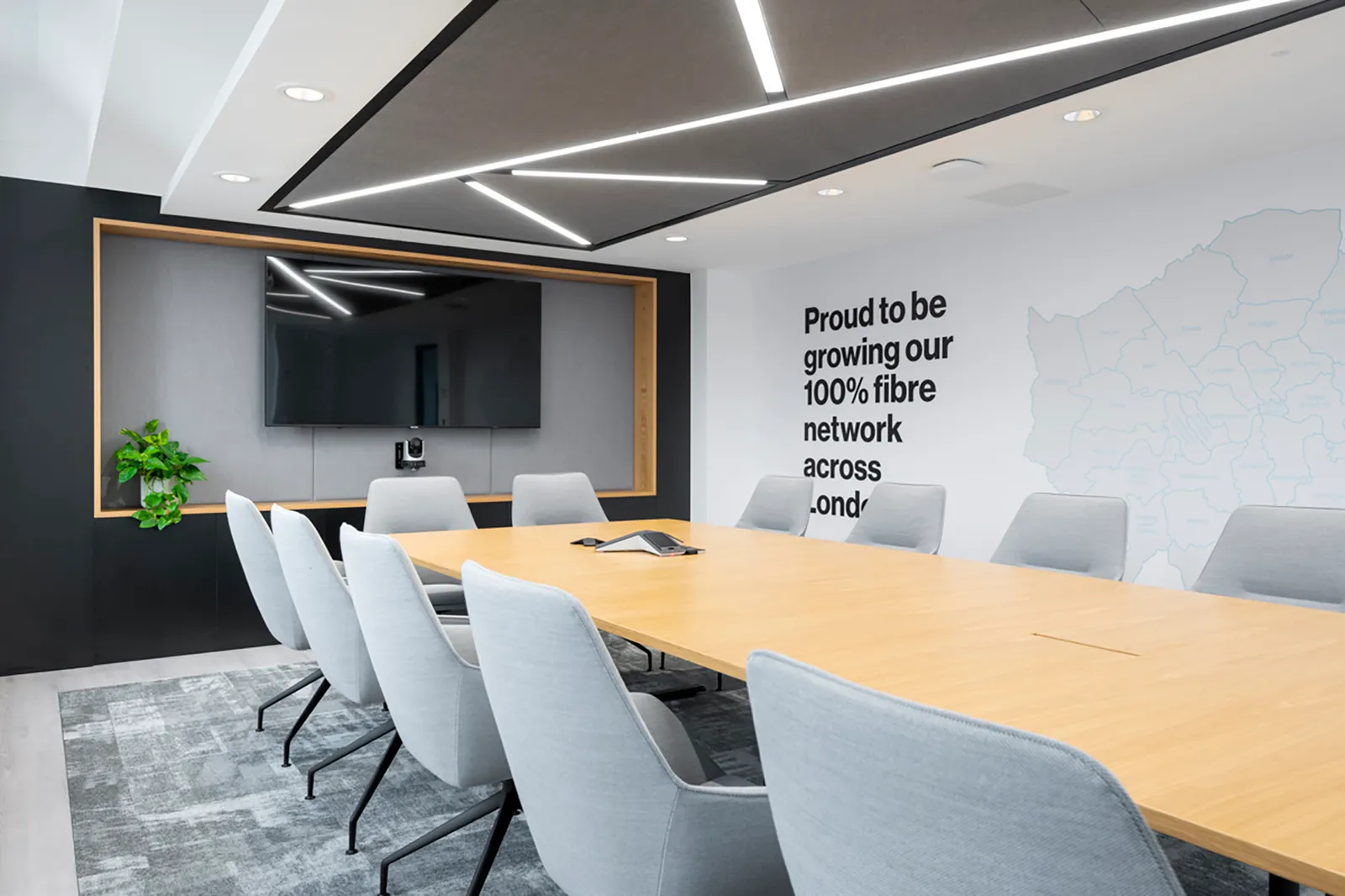
The power of smart furniture
Innovative office furniture designs are at the forefront of the technology-driven workplace revolution. Smart furniture, equipped with sensors and connectivity features, is becoming increasingly popular. Ergonomics in office furniture, such as chairs embedded with sensors can adjust their support based on the user's posture, promoting better spinal health and reducing discomfort during long work hours. Similarly, desks equipped with height-adjustable features can cater to the varied preferences of employees, fostering a workspace that aligns with diverse needs.
Moreover, the connectivity features of smart furniture contribute significantly to the efficiency of the overall office environment. These pieces seamlessly integrate with the Internet of Things (IoT), creating a network of interconnected devices that communicate and collaborate for a more synchronised workplace. Imagine desks that can intuitively adjust their height based on an employee's arrival, or chairs that provide data on sitting patterns to encourage healthier habits – this is the future that smart furniture envisions.
IoT integration for seamless connectivity
The Internet of Things (IoT) is a game-changer in office design, facilitating seamless connectivity between devices. Consider the evolution of lighting systems, for instance. In the not-so-distant past, office lighting was a static component. Fast forward to today, and these systems are designed to intelligently adjust to natural daylight, creating an ambient environment that not only enhances visual comfort but also contributes to energy efficiency by minimising the reliance on artificial lighting during daylight hours.
Temperature control systems, another cornerstone of office comfort, have undergone a revolutionary transformation with the integration of IoT. Traditional HVAC systems operate on pre-set schedules, often leading to suboptimal energy consumption. Enter smart temperature control systems that respond dynamically to occupancy patterns. These systems utilise occupancy sensors to assess the number of people in a particular area, adjusting temperature settings accordingly.
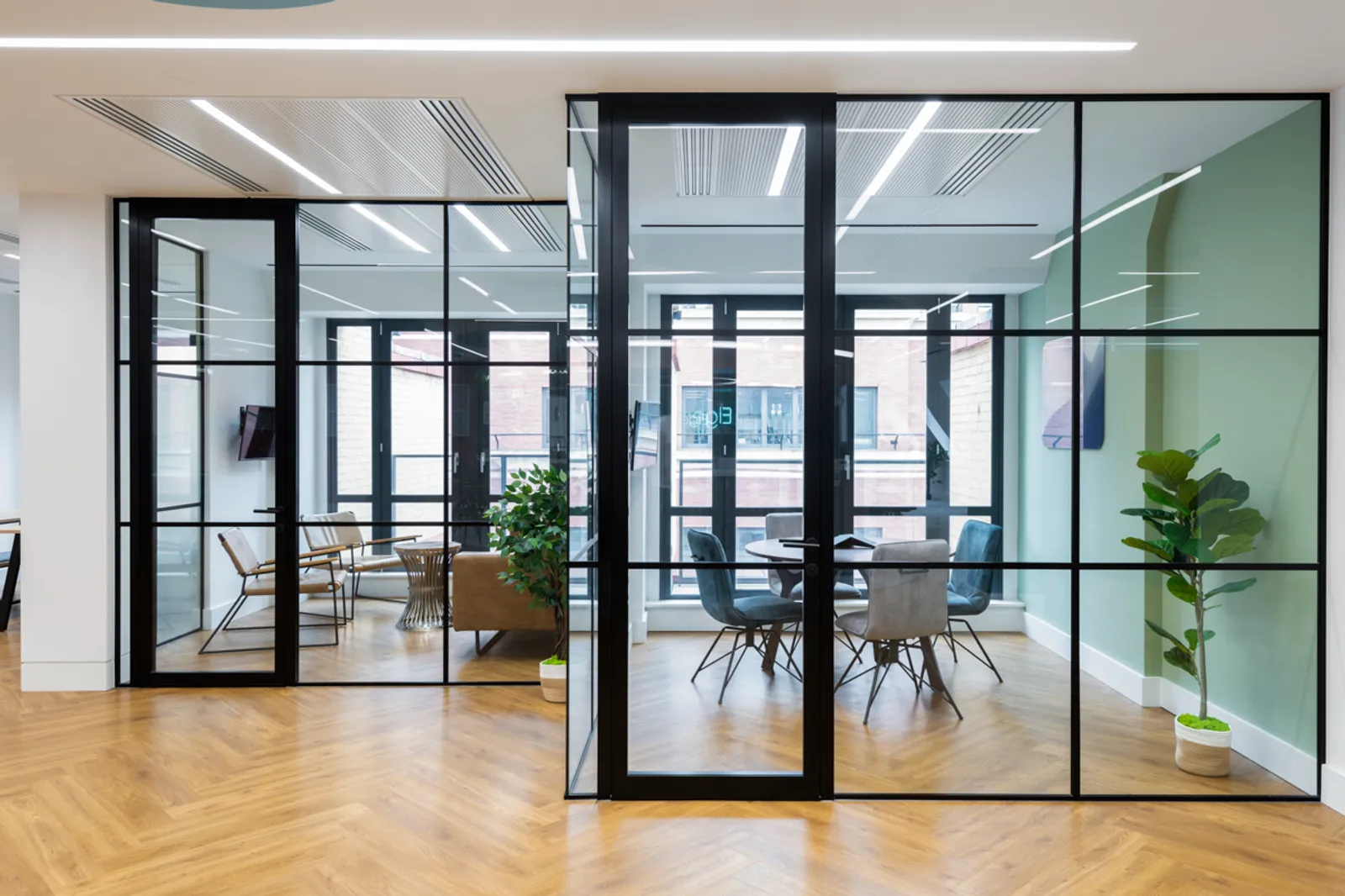
Sustainable technology integration
As sustainability takes centre stage in corporate responsibility, integrating eco-friendly technologies is paramount. This includes smart lighting systems with motion sensors and HVAC systems that optimise energy consumption. By leveraging sustainable technology in office design, you not only reduce the environmental impact but also contribute to long-term cost savings for your business.
Simultaneously, the rising popularity of biophilic design offers an opportunity to infuse your workplace with a green ethos, both in terms of functionality and aesthetics. Embracing this design philosophy contributes to creating an environment that resonates with nature, aligning with the broader goal of sustainability and responsible business practices.
Smart lighting systems equipped with motion sensors represent a leap forward in energy-efficient illumination. In parallel, HVAC systems play a pivotal role in creating comfortable indoor environments, but they are also notorious for their energy consumption. Sustainable technology intervenes in this realm by introducing smart HVAC systems designed to optimise energy usage. These systems leverage sensors to assess factors such as occupancy, temperature, and external weather conditions. By dynamically adjusting heating, cooling, and ventilation in response to real-time data, businesses can achieve a balance between occupant comfort and energy efficiency. This not only minimises the carbon footprint associated with energy consumption but also leads to substantial operational cost savings over time.
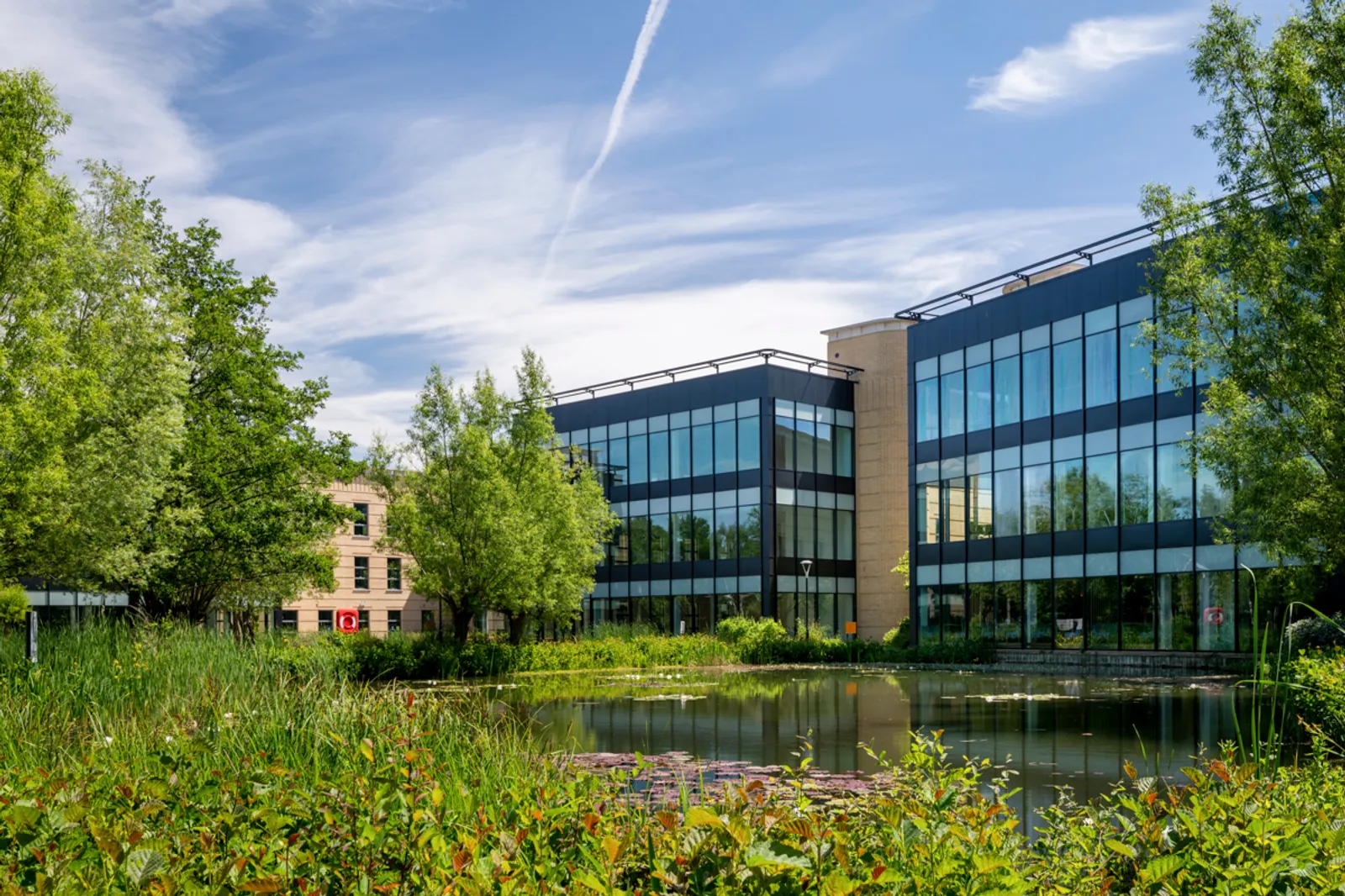
Collaborative technologies
In the era of remote work and global collaboration, the importance of collaborative technologies cannot be overstated. The advent of collaborative technologies has not just been a response to the rise of remote work but a proactive measure to enhance communication and foster innovation across borders. Whether it's real-time messaging platforms, project management tools, or video conferencing solutions, these technologies bridge the gap between team members separated by miles, ensuring a level of connectivity that transcends physical barriers.
Security and privacy considerations
In the era of increased connectivity, ensuring the security and privacy of sensitive information is of utmost importance. This means prioritising the integration of secure technologies, through features such as biometric access controls and encrypted communication systems, to safeguard against potential cybersecurity threats.
Biometric access controls represent a cutting-edge solution that leverages unique biological identifiers such as fingerprints or facial recognition, meaning organisations can establish a highly secure and personalised means of granting access. This not only fortifies the physical security of sensitive areas but also ensures that only authorised personnel can access critical information, adding an additional layer of protection against unauthorised breaches.
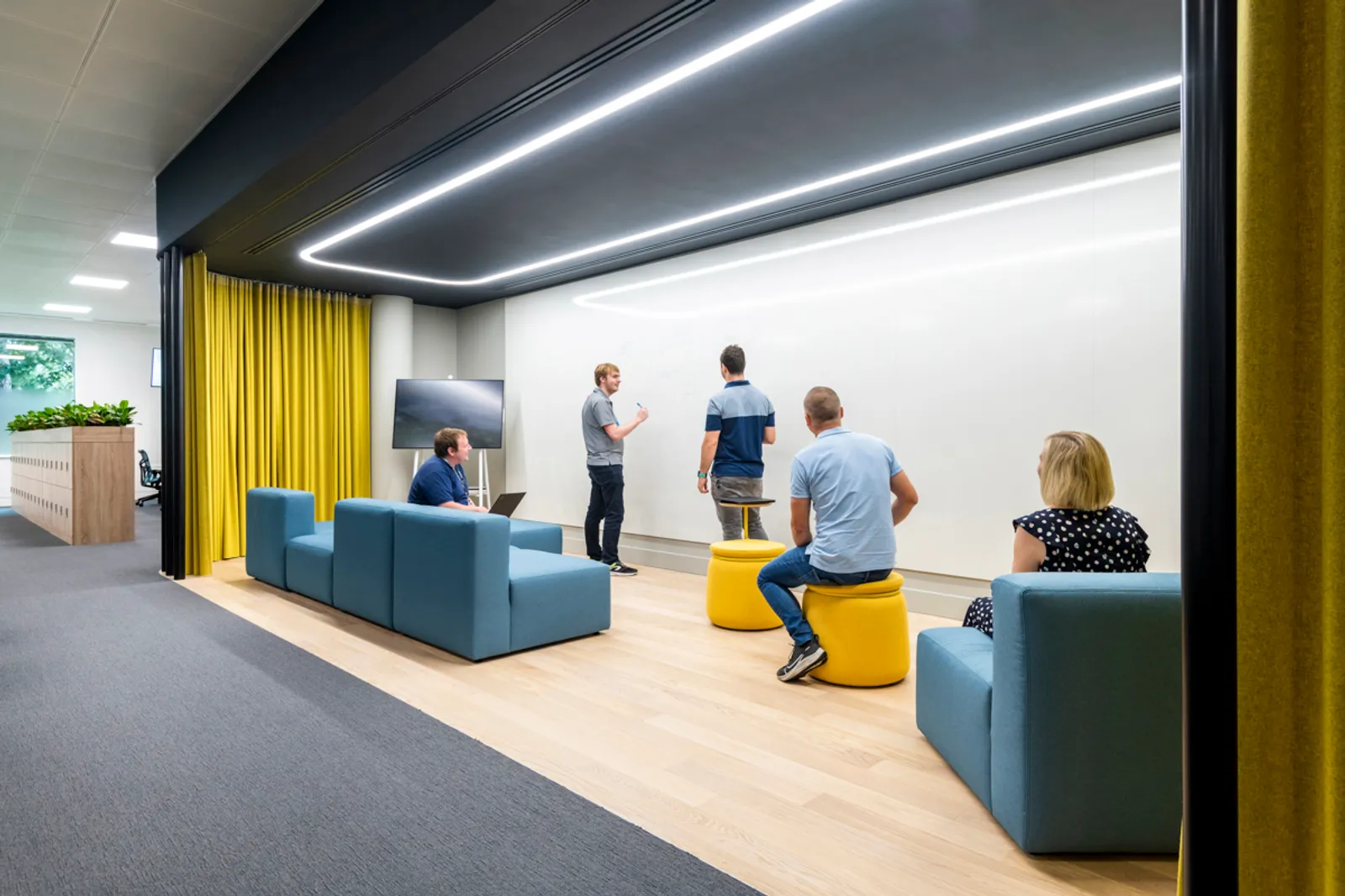
Design your office with a technology-focused approach with Area
We understand that the integration of technology in office design is not just a trend but a necessity for businesses striving to stay ahead in a competitive landscape. At Area, we blend our expertise in office design with cutting-edge technology to create workspaces that are not only smart and connected but also tailored to the unique needs of each client. By embracing the latest advancements, we empower businesses to create environments that inspire innovation, collaboration, and overall success in the modern workplace.
Want to learn more? Get in touch with us today to discuss how we can best help you.

